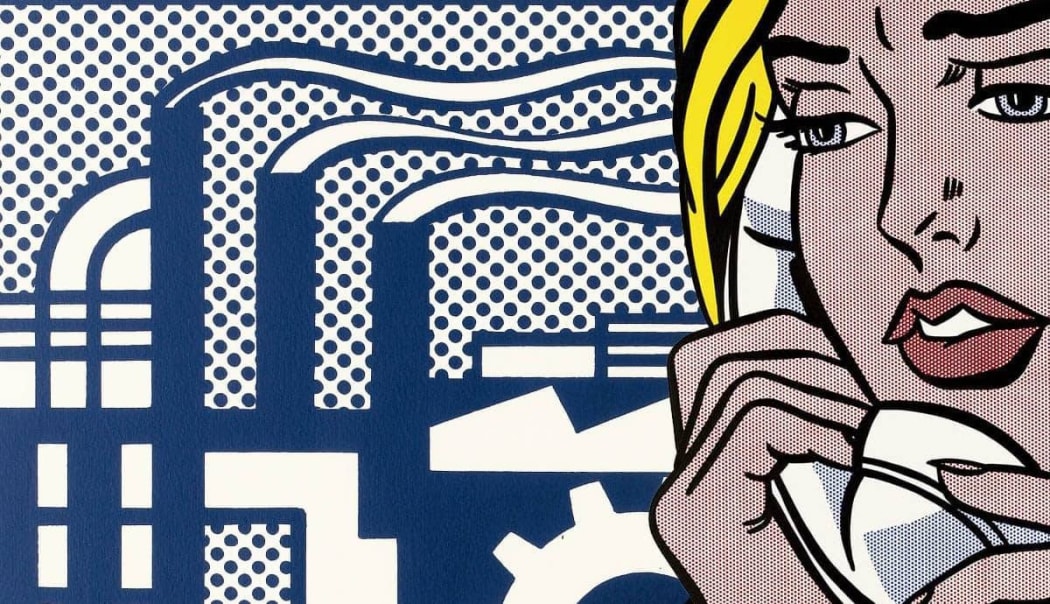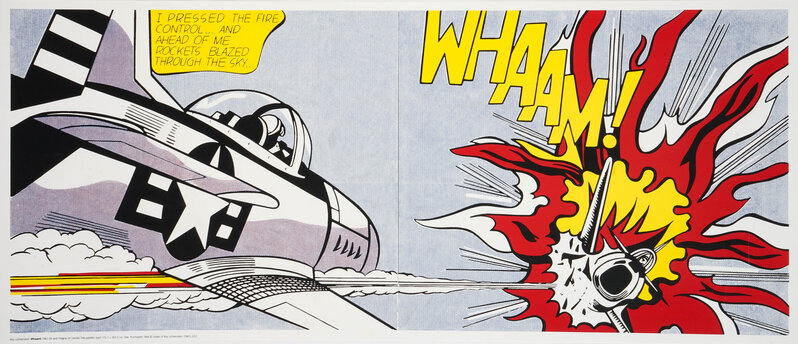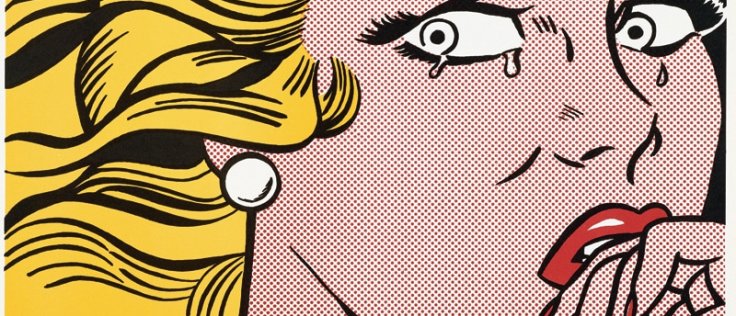
Pop Art emerged in the 1950s and 1960s as a reaction to the prevalent abstract expressionism of the time. Pop artists, including Lichtenstein, sought to bridge the gap between high and low culture by drawing inspiration from everyday objects, advertising, and popular media.
Lichtenstein and the Influence of Comic Books
Comic books were a treasure trove of imagery, narrative, and emotions that fascinated Lichtenstein. His interest in comic books was not merely as an observer but as an artist fascinated by the graphic nature of the medium. He recognised the power of comic book art to convey complex emotions and narratives within a confined space.
Lichtenstein's appropriation of comic book imagery was not a simple act of copying but a deliberate transformation into fine art. He meticulously recreated comic book panels, but in doing so, he heightened the visual elements, emphasising the dots, lines, and vibrant colours. One of his most iconic works, "Whaam!" (1963), is a prime example of this transformation. In this piece, he takes a frame from a war comic and turns it into a bold and striking work of art.

The Significance of Ben-day Dots
One of the defining features of Lichtenstein's work is the use of Benday dots, a printing technique commonly found in comic books. These dots were used to create varying shades and tones in the printing process. Lichtenstein adopted this technique, not just as a visual homage but as a way to explore the relationship between art and mass production.

Lichtenstein's use of comic book imagery went beyond mere visual fascination. His works often contained subtle commentary on consumer culture, mass production, and the role of art in a rapidly changing society. By appropriating and recontextualising these images, he invited viewers to question the boundaries of art and everyday life.

Lichtenstein’s Lasting Legacy
Roy Lichtenstein's fusion of comic book aesthetics and fine art has left a lasting impact on the art world. His work paved the way for future generations of artists who continued to explore the boundaries between high and low culture. Today, contemporary artists like Jeff Koons and Takashi Murakami owe a debt to Lichtenstein's groundbreaking approach.
His exploration of comic book imagery is a testament to the power of appropriation and transformation in art. He took what was often dismissed as lowbrow culture and elevated it into fine art, challenging traditional notions of artistic creation. By doing so, he not only became an iconic figure in the Pop Art movement but also left behind a legacy that continues to inspire artists and art enthusiasts alike. Lichtenstein's art reminds us that even the most seemingly ordinary objects and images can hold profound artistic potential when seen through the eyes of a visionary artist.
Discover Roy Lichtenstein original prints for sale at Andipa Editions and contact our gallery via sales@andipa.com or call +44 (0)20 7589 2371 for further information.
